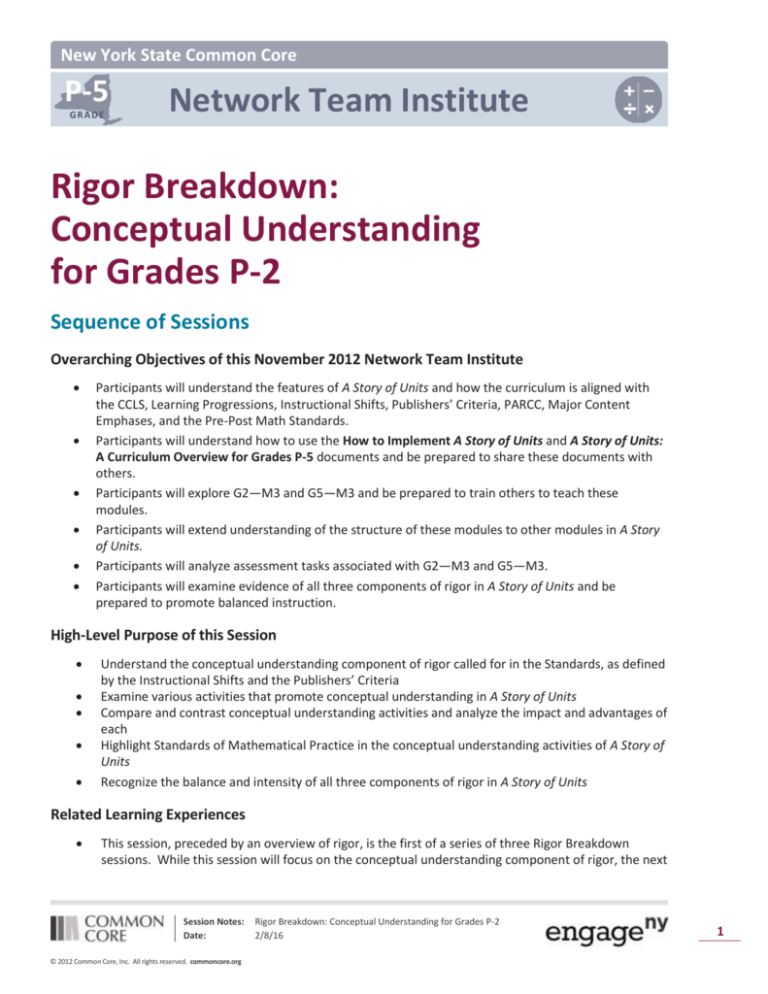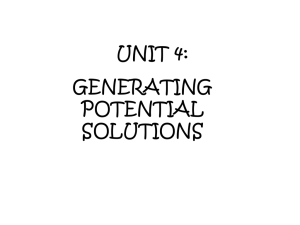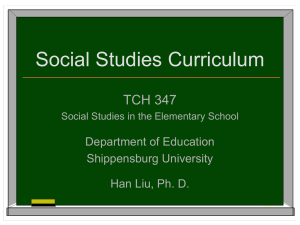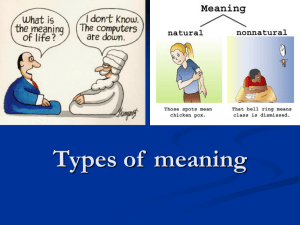
New York State Common Core
P-5
GRADE
Network Team Institute
Rigor Breakdown:
Conceptual Understanding
for Grades P-2
Sequence of Sessions
Overarching Objectives of this November 2012 Network Team Institute
Participants will understand the features of A Story of Units and how the curriculum is aligned with
the CCLS, Learning Progressions, Instructional Shifts, Publishers’ Criteria, PARCC, Major Content
Emphases, and the Pre-Post Math Standards.
Participants will understand how to use the How to Implement A Story of Units and A Story of Units:
A Curriculum Overview for Grades P-5 documents and be prepared to share these documents with
others.
Participants will explore G2—M3 and G5—M3 and be prepared to train others to teach these
modules.
Participants will extend understanding of the structure of these modules to other modules in A Story
of Units.
Participants will analyze assessment tasks associated with G2—M3 and G5—M3.
Participants will examine evidence of all three components of rigor in A Story of Units and be
prepared to promote balanced instruction.
High-Level Purpose of this Session
Understand the conceptual understanding component of rigor called for in the Standards, as defined
by the Instructional Shifts and the Publishers’ Criteria
Examine various activities that promote conceptual understanding in A Story of Units
Compare and contrast conceptual understanding activities and analyze the impact and advantages of
each
Highlight Standards of Mathematical Practice in the conceptual understanding activities of A Story of
Units
Recognize the balance and intensity of all three components of rigor in A Story of Units
Related Learning Experiences
This session, preceded by an overview of rigor, is the first of a series of three Rigor Breakdown
sessions. While this session will focus on the conceptual understanding component of rigor, the next
Session Notes:
Date:
© 2012 Common Core, Inc. All rights reserved. commoncore.org
Rigor Breakdown: Conceptual Understanding for Grades P-2
2/8/16
1
NYS COMMON CORE MATHEMATICS PD
Rigor Breakdown: Conceptual Understanding
two sessions will focus on the other two components: procedural skill and fluency, and application.
This series of three sessions on rigor will be followed by a collaborative session during which
participants will lay out the structure and foundation needed for lesson planning within a module.
Key Points
Conceptual understanding can be promoted in a variety of ways including use of concrete and
pictorial models, conceptual questioning, and writing/speaking about understanding.
Conceptual understanding represents a major part of the instructional vision that shapes A Story of
Units. Frequent, rich opportunities to help students achieve conceptual understanding are woven
throughout A Story of Units.
These opportunities for conceptual development are often also opportunities to nurture the
Standards for Mathematical Practice. The Standards for Mathematical Practice are embedded into all
components of rigor and are not separate from the content instruction.
Session Outcomes
What do we want participants to be able to do as a result of this session?
Understand the importance of conceptual understanding
Recognize conceptual understanding activities in A Story of Units
How will we know that they are able to do this?
Participants will share their grasp of conceptual understanding and its importance with colleagues,
providing examples of how it occurs in A Story of Units.
Participants and their colleagues will successfully implement conceptual understanding activities as
described in A Story of Units.
Session Overview
Section
Opening
Conceptual
Understanding –
Concrete and
Pictorial Models
Time
0:00-0:05
(5 min)
0:05-0:25
(20 min)
Overview
Link to previous sessions; frame the
session, referencing the agenda
Examine conceptual understanding
as defined in the Shifts and
Publishers’ Criteria
Examine how A Story of Units
develops conceptual understanding
Review the flow and objectives of
this session
Examine the concepts being
developed in Grade 2 Module 3
Watch video clip of a teacher
(Example 1) engaging with students
to developing conceptual
Session Notes:
Date:
© 2012 Common Core, Inc. All rights reserved. commoncore.org
Prepared Resources
Facilitator Preparation
Session PowerPoint
Review session notes and
PowerPoint presentation
How to Implement A Story of Units
(can be used as a reference for the Download the CCLS for easy
Standards of Mathematical
reference to the Standards of
Practice)
Mathematical Practice
Download Crosswalk of
Instructional Shifts for easy
reference as needed
Download Publishers’ Criteria for
easy reference as needed
Video Clip: Shoe Box Place Value
Review and download video file as
Chart
a back-up in case there is a problem
with the embedded video
Rigor Breakdown: Conceptual Understanding
2/8/16
2
NYS COMMON CORE MATHEMATICS PD
Conceptual
Understanding –
Conceptual
Questioning
0:25-0:40
(15 min)
Conceptual
Understanding –
Writing and
Speaking About
Understanding
0:40-0:50
(10 min)
Closing
0:50-1:00
(10 min)
TOTAL TIME
60 min
Rigor Breakdown: Conceptual Understanding
understanding using concrete or
pictorial models
Analyze the impact and advantages
of the conceptual understanding
work in Example 1
Identify evidence of Standards for
Mathematical Practice in Example 1
Recall that Mathematical Practices
are not a separate activity
Engage in in Example 2 of work
Organize base-ten bundles of
developing conceptual
straws, place value boxes, and a full
understanding through conceptual
set of place value cards through
questioning
1000 to model for modeling
Identify evidence of Standards for
Organize sets of place value cards
Mathematical Practice in Example 2
1-5, 10-50, and 100-500 (one set
per table)
Compare and contrast examples 1
and 2, analyzing the impact and
advantages of each
Engage in Example 3 of developing Video Clip: Stickers Problem
Review and download video file as
conceptual understanding through G2—M3—D—L10 Worksheet
a back-up in case there is a problem
writing and speaking about
with the embedded video
understanding
Compare and contrast conceptual
understanding activities of the
three examples, analyzing the
impact and benefits of each
• How to Implement A Story of Units
Summarize key points
Reflect on next steps
Reflect on the role of conceptual
understanding in balanced
instruction
Session Roadmap
Opening
Time: 0:00-0:05
[5 minutes] In this section, you will…
Link to previous sessions; frame the session, referencing the agenda
Examine conceptual understanding as defined in the Shifts and Publishers’ Criteria
Examine how A Story of Units develops conceptual understanding
Review the flow and objectives of this session
Materials used include:
Session PowerPoint
How to Implement A Story of Units
Session Notes:
Date:
© 2012 Common Core, Inc. All rights reserved. commoncore.org
Rigor Breakdown: Conceptual Understanding
2/8/16
3
NYS COMMON CORE MATHEMATICS PD
Rigor Breakdown: Conceptual Understanding
(SLIDE 1) During the last session we focused on rigor and its three different components from a holistic point of view.
You had an opportunity to take a look at rigor from an assessment and problem solving approach by analyzing the
PARCC Type I, II, and III Tasks as well as assessment tasks and rubrics from A Story of Units. We saw how the three
components of rigor are embedded into the assessment tasks.
(SLIDE 2) In the next three sessions we will carefully examine each of the three components of rigor: conceptual
understanding, procedural skill and fluency, and application by experiencing and analyzing specific examples of each
component.
(SLIDE 3) In this first rigor breakdown session we will focus on the conceptual understanding component of rigor.
(SLIDE 4) The objectives of this session are to:
Understand the conceptual understanding component of rigor called for in the Standards, as defined by the
Instructional Shifts and the Publishers’ Criteria
Examine various activities that promote conceptual understanding in A Story of Units
Compare and contrast conceptual understanding activities and analyze the impact and advantages of each
Highlight Standards of Mathematical Practice in the conceptual understanding activities of A Story of Units
Recognize the balance and intensity of all three components of rigor in A Story of Units
(SLIDE 5) Let’s begin with referencing the description of conceptual understanding provided by the Crosswalk of
Common Core Instructional Shifts: Mathematics. It explains that for deep understanding to occur, “Teachers teach
more than ‘how to get the answer’ and instead support students’ ability to access concepts from a number of
perspectives so that students are able to see math as more than a set of mnemonics or discrete procedures. Students
demonstrate deep conceptual understanding of core math concepts by applying them to new situations as well as
writing and speaking about their understanding.”
(SLIDE 6) According to page 5 of the Publishers’ Criteria, “The word ‘understand’ is used in the Standards to set explicit
expectations for conceptual understanding…” Pages 9-10 of the Publishers’ Criteria state with respect to understanding
that, “Materials amply feature high-quality conceptual problems and questions that can serve as fertile conversationstarters in a classroom if students are unable to answer them…”
(SLIDE 7) The Publishers’ Criteria goes on to explain that, “…This includes brief conceptual problems with low
computational difficulty (e.g., ‘Find a number greater than 1/5 and less than ¼’); brief conceptual questions (e.g., ‘If the
divisor does not change and the dividend increases, what happens to the quotient?’); and problems that involve
identifying correspondences across different mathematical representation of quantitative relationships.”
(SLIDE 8) Our examples of conceptual understanding for this session will come directly from Grade 2 – Module 3. Our
session will start with a description of the concepts developed in this module. Next, we will examine three forms of
conceptual understanding work by watching video clips and engaging in sample activities of conceptual understanding
from the module.
Session Notes:
Date:
© 2012 Common Core, Inc. All rights reserved. commoncore.org
Rigor Breakdown: Conceptual Understanding
2/8/16
4
NYS COMMON CORE MATHEMATICS PD
Rigor Breakdown: Conceptual Understanding
Conceptual Understanding – Concrete and Pictorial Models
Time: 0:05-0:25
[20 minutes] In this section, you will…
Examine the concepts being developed in Grade 2 Module 3
Watch video clip of a teacher (Example 1) engaging with students to develop conceptual understanding using
concrete or pictorial models
Analyze the impact and advantages of the conceptual understanding work in Example 1
Identify evidence of Standards for Mathematical Practice in Example 1
Recall that Mathematical Practices are not a separate activity
Materials used include:
Video Clip: Shoe Box Place Value Chart
(CLICK TO ADVANCE ANIMATION ON SLIDE 8) We begin with getting familiar with Grade 2 – Module 3 content.
(SLIDE 9) In Grade 2—Module 3, students gain in-depth conceptual understanding of place value through counting
units of ones, tens, and hundreds. The lessons in this module begin with students understanding how to form and
name units by bundling straws. The efficiency of place value is brought to life as students see how to manipulate units
of ones, tens and hundreds and to bundle 10 ones to get a ten and 10 tens to get a hundred. They also learn that 10
tens and 100 ones are equal and that 1000 equals both 100 tens and 10 hundreds. Students will continue to learn to
express their understanding of concepts through speaking and writing. They experience deep understanding of the
concept thereby paving the way for new types of fluency.
(SLIDE 10) Let’s have a look at one form of developing conceptual understanding – use of concrete and pictorial
models.
(SLIDE 11) We’re going to watch a video clip of a 2nd grade class engaged in learning about place value. After the video
you’ll be asked to discuss the following:
If you teach this concept in your grade level, compare and contrast the example with how you develop this
same concept in your classroom today.
Analyze the impacts and advantages of developing conceptual understanding using concrete and pictorial
models.
Identify one or more mathematical practices that are being employed in this example.
The video shows Lisa Watts-Lawton, a writer for A Story of Units who teaches at Ramona Elementary in
Los Angeles. Her students have recently learned how to name and form units of tens and hundreds by
bundling. They are now using the bundles and place value boxes to build conceptual understanding of
place value as they link the bundles and boxes to place value cards.
(SLIDE 12 – Play Video Clip: Shoe Box Place Value Chart from G2—M3—C—L4.)
(SLIDE 13) Take a moment to consolidate your thoughts on the questions posed before the video.
Then you will have an opportunity to discuss your thoughts.
(Allow 2 minutes for independent reflection.)
Session Notes:
Date:
© 2012 Common Core, Inc. All rights reserved. commoncore.org
Rigor Breakdown: Conceptual Understanding
2/8/16
5
NYS COMMON CORE MATHEMATICS PD
Rigor Breakdown: Conceptual Understanding
Turn and talk with a partner at your table about your response to these questions.
(Allow 2 minutes for turn and talk, and then facilitate a discussion.)
(SLIDE 14) According to page 8 of the CCSSM, “The Standards for Mathematical Practice describe ways in which
developing student practitioners of the discipline of mathematics increasingly ought to engage with the subject matter
as they grow in mathematical maturity and expertise throughout the elementary, middle and high school years.”
Recall that the Mathematical Practices are to be consciously integrated into everything you do and are not separate
activities that take away from content instruction.
(SLIDE 15) Let’s review some of the benefits associated with using concrete and pictorial materials to develop
conceptual understanding.
(CLICK TO ADVANCE FIRST BULLET ON SLIDE 15) Concrete materials give students an experiential
understanding of a given operation or concept.
(CLICK TO ADVANCE SECOND BULLET ON SLIDE 15) When we progress from a concrete model to a pictorial
representation, students are in charge of creating their own visual representations. This new responsibility
offers more flexibility in their representation, and in turn, often leads to erroneous representations. It may
take a bit of practice for students to correctly produce a visual model of what they have just experienced
concretely. Talking about what they have drawn often encourages them to analyze and correct any
misrepresentations.
(CLICK TO ADVANCE THIRD BULLET ON SLIDE 15) If we skip the concrete and pictorial representations, concepts
and operations become disconnected from their actual meaning, thus robbing students of understanding when
and how to apply the concepts and operations they are learning about.
Conceptual Understanding – Conceptual Questioning
Time: 0:25-0:40
[15 minutes] In this section, you will…
Engage in Example 2 of work developing conceptual understanding through conceptual questioning
Identify evidence of Standards for Mathematical Practice in Example 2
Compare and contrast Examples 1 and 2, analyzing the impact and advantages of each
Materials used include:
Base-ten bundles of straws, place value boxes, and a full set of place value cards through 1000 to model
Set of place value cards 1-5, 10-50, and 100-500 (one set per table)
(SLIDE 16) Throughout this session, we aim to provide varied samples of conceptual understanding work in A Story of
Units. Know that there is no one set way to promote deep understanding. This example uses conceptual questions to
build understanding.
(SLIDE 17) The example comes from this same module, building upon what you just saw in the video clip. This time we
Session Notes:
Date:
© 2012 Common Core, Inc. All rights reserved. commoncore.org
Rigor Breakdown: Conceptual Understanding
2/8/16
6
NYS COMMON CORE MATHEMATICS PD
Rigor Breakdown: Conceptual Understanding
will be engaging in the lesson ourselves. I will play the role of the teacher, and you will play the role of the students.
Here are some prompts for reflection that we will discuss after the exercise.
Identify conceptual questioning in the example.
Identify a mathematical practice that was employed in this example.
Compare and contrast this example with the last example, analyzing the impact and advantages of each.
Exercise: 6 minutes from G2—M3—C—L5
T:
S:
T:
S:
T:
S:
T:
S:
T:
S:
T:
S:
T:
T:
T:
S:
T:
T:
T:
(Have 4 ones, 3 tens and 2 hundreds already in the place value boxes.) Count the units.
1 one, 2 ones, 3 ones, 4 ones. 1 ten, 2 tens, 3 tens. 1 hundred, 2 hundreds.
Can I make larger units?
No!
Why not?
Because you didn’t make ten.
In order from greatest to smallest, how many of each unit are there?
2 hundreds, 3 tens, 4 ones.
(Show 234 with place value cards. Pull the cards apart to show the value of each digit separately.
Push them back together to unify the values as one number.) Open your bag. Build the number 234
with your place value cards.
(Students find the cards in their bags and build the number.)
Which of your cards shows this number of straws? (Hold up two hundreds.) This number of straws?
(Hold up 4 ones.) Which has greater value, 2 hundreds or 4 ones?
2 hundreds.
But I have 4 of the ones and only 2 of the hundreds. Are you sure that the 2 hundreds has a greater
value than the 4 ones?
Who can explain?
(Allow one or two students to explain. Then write on the board ___ hundreds ___ tens ___ ones.)
Read the unit form for me to tell about this number (point to the number modeled in the place
value box).
2 hundreds 3 tens 4 ones.
That is called unit form.
We read this also as (write on board) two hundred thirty-four. This is the word form.
Work with your partner with your place value cards showing 234. Pull the cards apart and push
them together. Read the number in unit form and in word form.
Take three minutes now to reflect on the prompts. Then you will have an opportunity to discuss your
thoughts. (Allow 3 minutes for independent reflection.)
Identify conceptual questioning in the example.
Identify a mathematical practice that was employed in this example.
Session Notes:
Date:
© 2012 Common Core, Inc. All rights reserved. commoncore.org
Rigor Breakdown: Conceptual Understanding
2/8/16
7
NYS COMMON CORE MATHEMATICS PD
Rigor Breakdown: Conceptual Understanding
Compare and contrast this example with the last example, analyzing the impact and advantages of
each.
Turn and talk with a partner at your table about your reflections.
(Allow 2 minutes for turn and talk, and then facilitate a discussion.)
(SLIDE 18) Let’s review some of the key points of conceptual questioning.
(CLICK TO ADVANCE FIRST BULLET ON SLIDE 18) Conceptual questioning gets students to think well beyond
getting the right answer. So often students get confirmation that their answer is right and all thinking and
learning stops at that point.
(CLICK TO ADVANCE SECOND BULLET ON SLIDE 18) A series of questioning may begin with a yes/no question,
but in all cases, it should require more… possibly asking them to find a non-example or find how a change in
one quantity would affect the answer.
(CLICK TO ADVANCE THIRD BULLET ON SLIDE 18) Questions should be inserted throughout the lesson insisting
that students push forward to reflect on subtleties, implications, insights, and tools that might be applied to
other problems. Confirmation of an answer can be delayed until after such reflections or even left open for the
students to decide. When we question students in this way, we, as teachers, get a much clearer picture of the
students’ current level of understanding. Here are some examples.
(CLICK TO ADVANCE FINAL EXAMPLE) The Publishers’ Criteria gives this simple example of conceptual questioning:
“Can you think of a number between 1/4 and 1/5?”
One additional note on questioning students: Invariably we will ask a few yes/no questions in our classroom. Keep in
mind that such questions can be worth asking if our body language and tone do not give away the desired response.
Your students should get used to having to build confidence and a defense to their positions by teachers questioning
them even when they have given a correct response.
(Note to the presenter: Some teachers may feel uncomfortable with the idea of students proving each other right or
wrong as is suggested in the sample questions. If so, encourage discussion of the benefits of establishing a classroom
environment where students feel comfortable defending their own positions and are not afraid of saying something
that they later decide is wrong. Done well, this environment truly promotes understanding and confidence.)
Conceptual Understanding – Writing and Speaking About Understanding
Time: 0:40-0:50
[10 minutes] In this section, you will…
Engage in Example 3 of developing conceptual understanding through writing and speaking about
understanding
Compare and contrast conceptual understanding activities of the three examples, analyzing the impact and
benefits of each
Session Notes:
Date:
© 2012 Common Core, Inc. All rights reserved. commoncore.org
Rigor Breakdown: Conceptual Understanding
2/8/16
8
NYS COMMON CORE MATHEMATICS PD
Rigor Breakdown: Conceptual Understanding
Materials used include:
Video Clip: Stickers Problem
G2—M3—D—L10 Worksheet
(SLIDE 19) The previous activities emphasized the use of conceptual questions to build deep understanding. Now let’s
examine opportunities for students to write and speak about their understandings.
(SLIDE 20) Recall that the Crosswalk of Common Core Instructional Shifts: Mathematics describes deep understanding
in this way:
“Teachers teach more than ‘how to get the answer’ and instead support students’ ability to access concepts
from a number of perspectives so that students are able to see math as more than a set of mnemonics or
discrete procedures. Students demonstrate deep conceptual understanding of core math concepts by applying
them to new situations as well as writing and speaking about their understanding.”
Notice the final phrase in this definition. Think back to the video clip we watched of popsicle sticks in the shoe box lids.
Can you recall students speaking about their understanding in the clip?
(SLIDE 21) Here is another short clip showing students speaking about their understanding of a problem they are
working on. As you watch the video consider the following question:
How does the speaking about understanding evident in the video compare with what occurs in your
classroom/school/district today?
(SLIDE 22) Here is the problem that the students have been given: Joseph has 100 stickers. Jared has 60 stickers. Jared
wants to have the same number of stickers as Joseph. How many more stickers does Jared need?
Lisa Watts-Lawton, a writer for A Story of Unit, teaches 2nd grade at Ramona Elementary in Los Angeles.
In this video, her students discuss ways to solve this problem.
(SLIDE 23 – Play Video Clip: Stickers Problem from G2–M3–D—L10.)
(SLIDE 24) Take a moment to consolidate your thoughts on the questions posed before the video.
Then you will have an opportunity to discuss your thoughts.
(Allow 2 minutes for independent reflection.)
Turn and talk with a partner at your table about how the speaking about understanding seen in the
video compares with what occurs in your classroom/school/district today?
(Allow 2 minutes for turn and talk, and then facilitate a discussion.)
(SLIDE 25) Now let’s look for more evidence of how A Story of Units implements the ‘writing and
speaking about their understanding’ piece of conceptual understanding as you complete the worksheet
that accompanies Lesson 10 from this module.
Session Notes:
Date:
© 2012 Common Core, Inc. All rights reserved. commoncore.org
Rigor Breakdown: Conceptual Understanding
2/8/16
9
NYS COMMON CORE MATHEMATICS PD
Rigor Breakdown: Conceptual Understanding
As you work, reflect on the following question:
What evidence of the “writing and speaking about their understanding” requirement did you
see as you completed the worksheet from G2–M3–TD—L10?
After the activity, you will have a chance to share your thoughts with a partner at your table.
When you have finished, turn and talk with a partner at your table about where you saw evidence of
students being asked to write and speak about their understanding. (Allow 2 minutes for turn and talk,
and then facilitate a discussion.)
(SLIDE 26) Let’s review some key points about how speaking and writing about understanding can occur in the
classroom:
(CLICK TO ADVANCE FIRST BULLET ON SLIDE 26) Speaking about understanding can occur among students
debating a problem or with a teacher questioning students individually or as a group.
(CLICK TO ADVANCE SECOND BULLET ON SLIDE 26) Writing about understanding can occur at the board, on
worksheets, on homework, or in student journals.
(CLICK TO ADVANCE THIRD BULLET ON SLIDE 26) Both speaking and writing are valuable ways to consolidate
learning and reveal students’ current level of understanding. Daily exit tickets, provided with each lesson, are
designed to give teachers immediate information about individual students’ understandings on a regular basis
so that they can use that information to tailor daily instruction to meet students’ needs.
(SLIDE 27) We have examined three examples of how conceptual understanding is fostered in A Story of Units:
Use of concrete and pictorial models
Conceptual questioning
Writing and speaking about understanding
Take two minutes now to make notes comparing and contrasting all three approaches, analyzing the
impact and advantages of each. Then you will have an opportunity to discuss your thoughts.
(Allow 2 minutes for independent reflection.)
Turn and talk with a partner at your table about your reflections.
(Allow 2 minutes for turn and talk, and then facilitate a discussion.)
Closing
Time: 0:50-1:00
[10 minutes] In this section, you will…
Summarize key points
Reflect on next steps
Reflect on the role of conceptual understanding in balanced instruction
Session Notes:
Date:
© 2012 Common Core, Inc. All rights reserved. commoncore.org
Rigor Breakdown: Conceptual Understanding
2/8/16
10
NYS COMMON CORE MATHEMATICS PD
Rigor Breakdown: Conceptual Understanding
Materials used include:
How to Implement A Story of Units
(SLIDE 28) Let’s review the key points of this session:
Conceptual understanding can be promoted in a variety of ways including use of concrete and pictorial models,
conceptual questioning, and writing/speaking about understanding.
Conceptual understanding represents a major part of the instructional vision that shapes A Story of Units.
Frequent, rich opportunities to help students achieve conceptual understanding are woven throughout A Story
of Units.
These opportunities for conceptual understanding are often also opportunities to nurture the Standards for
Mathematical Practice. The Standards for Mathematical Practice are embedded into all components of rigor
and are not separate from the content instruction.
(SLIDE 29) Take a moment to reflect on these next steps. Then you will have an opportunity to discuss
your thoughts.
How can you increase students’ deep understanding of the concepts you will be covering when you
return to your classroom/school?
How you can help your colleagues implement the conceptual understanding component of rigor?
Turn and talk with a partner at your table about how you will begin to implement these strategies for
promoting conceptual understanding.
(Allow 2 minutes for turn and talk, and then facilitate a discussion.)
(SLIDE 30) Recall that conceptual understanding is but one of three components of rigor. The Instructional Shifts
require that, “Students are practicing and understanding. There is more than a balance between these two things in
the classroom – both are occurring with intensity. Teachers create opportunities for students to participate in ‘drills’
and make use of those skills through extended application of math concepts…”
(SLIDE 31) So we see that the Standards call for equal intensity and balance among the three components. On page 5
of the Publishers’ Criteria we are told that, “To help students meet the expectations of the Standards, educators will
need to pursue, with equal intensity, three aspects of rigor in the major work of each grade: conceptual understanding,
procedural skill and fluency, and applications.” On page 9, the Publishers’ Criteria tells us that, in respect to rigor,
“Materials and tools reflect the balances in the Standards…” The variety of strategies we have explored that promote
conceptual understanding is an important part of balanced, rigorous instruction.
(SLIDE 32) The time spent on each component of rigor in daily lessons varies and is guided by the rigor emphasized in
the standard(s) addressed in any given lesson. To clearly communicate the carefully balanced and rigorous instruction
of A Story of Units, the overview of each module includes a Distribution of Instructional Minutes diagram. This is an
example. It shows, at a glance, the time devoted to each component of rigor in the module as a whole, as well as in any
given lesson of the module. Look at Lesson 4 of this example module. Note that this lesson begins with 15 minutes of
fluency work, followed by 20 minutes of concept development and 15 minutes of problem-solving applications. As
usual, the lesson ends with a 10 minute student debrief.
Session Notes:
Date:
© 2012 Common Core, Inc. All rights reserved. commoncore.org
Rigor Breakdown: Conceptual Understanding
2/8/16
11
NYS COMMON CORE MATHEMATICS PD
Rigor Breakdown: Conceptual Understanding
(SLIDE 33) To further promote balanced rigorous instruction, every lesson begins with a pie graph illustrating the
Suggested Lesson Structure. Note that this information is from Lesson 4 of the Distribution of Instructional Minutes
diagram that we just discussed. The actual order of Fluency Practice, Concept Development, Application Problems, and
Student Debrief in each lesson is determined by the content and pedagogy of the lesson. While the time spent on
conceptual development varies among lessons depending on the standards being addressed and the nature of that
particular lesson content, conceptual development is commonly a large portion of the total lesson time. The Student
Debrief usually wraps up the ideas learned for the day and is often a powerful component of the lesson structure. It is a
daily opportunity to promote discussion about concepts.
In closing, let’s look at where this information can be found in How to Implement A Story of Units. Turn to the section
explaining The Common Core Approach to Lesson Structure on page 21. Note that information about the Distribution
of Instructional Minutes and the Suggested Lesson Structure is provided.
Turn to page 23 and read the section on Concept Development. (Allow 2 minutes for participants to read
independently, and then facilitate a discussion.)
Turnkey Materials Provided
PowerPoint Presentation
How to Implement A Story of Units
G2—M3—D—L10 Worksheet (provided in G2—M3)
Video Clip: Shoe Box Place Value Chart
Video Clip: Stickers Problem
Additional Suggested Resources
CCLS – http://www.p12.nysed.gov/ciai/common_core_standards/pdfdocs/nysp12cclsmath.pdf
Instructional Shifts – http://schools.nyc.gov/NR/rdonlyres/9375E046-3913-4AF5-9FE3D21BAE8FEE8D/0/CommonCoreInstructionalShifts_Mathematics.pdf
Publishers’ Criteria – http://www.corestandards.org/assets/Math_Publishers_Criteria_K8_Summer%202012_FINAL.pdf
Session Notes:
Date:
© 2012 Common Core, Inc. All rights reserved. commoncore.org
Rigor Breakdown: Conceptual Understanding
2/8/16
12






